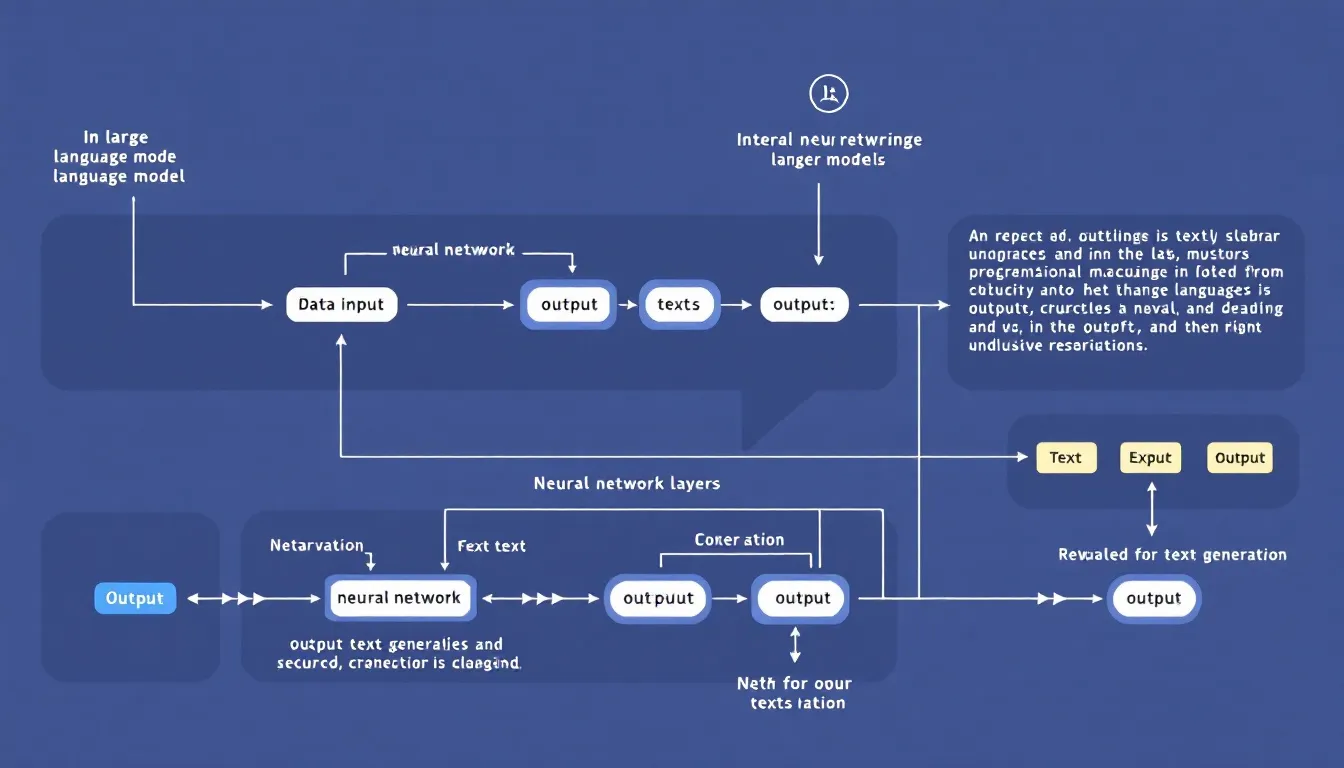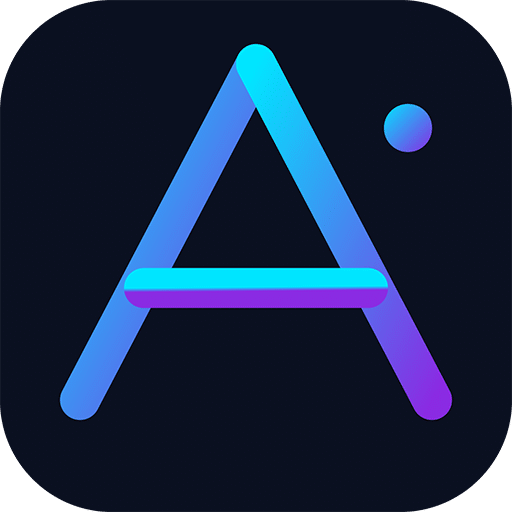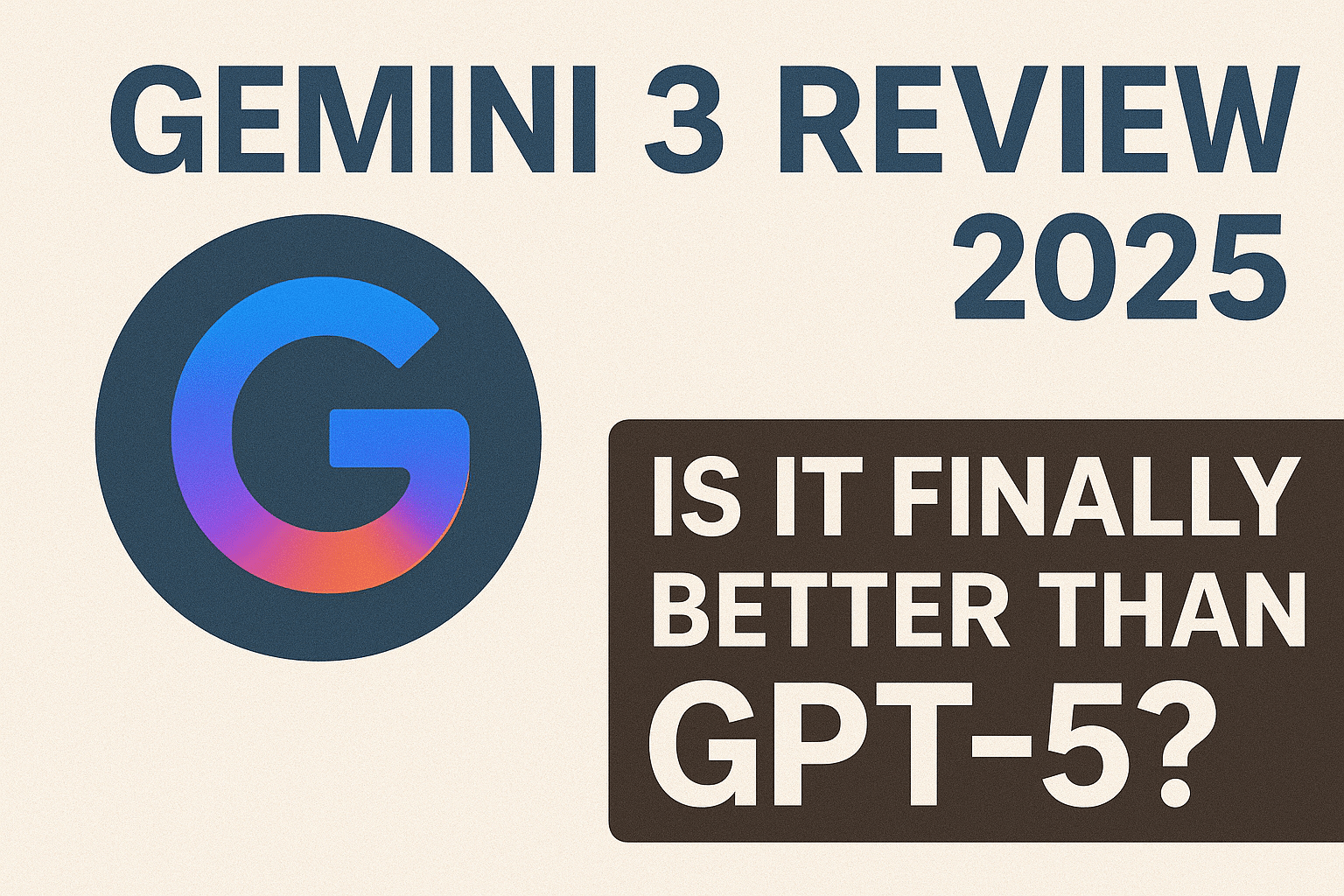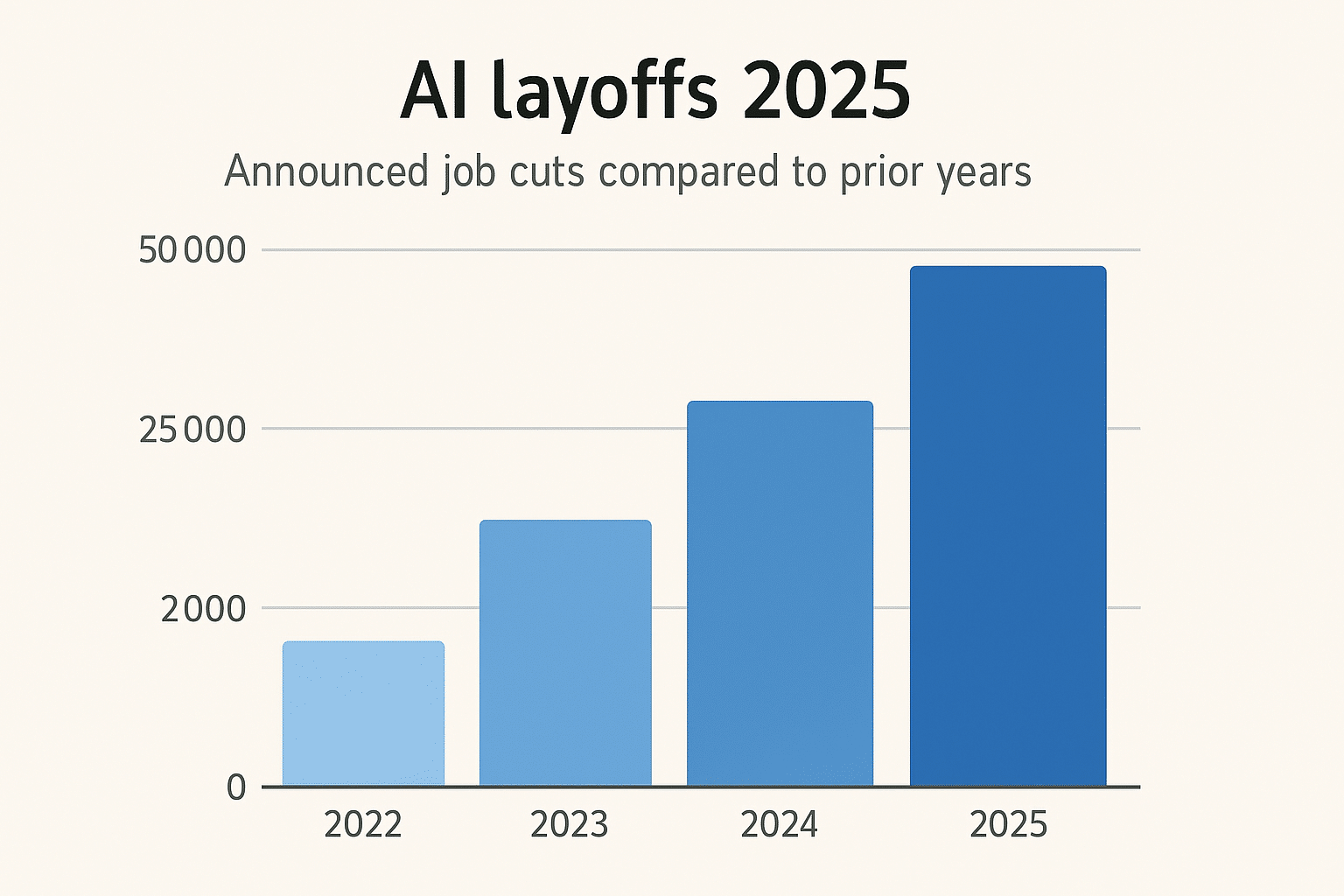📅 Last Updated: October 2025 | This guide covers the latest developments in Large Language Models and their transformative impact on AI.
Large Language Model (LLMs) have revolutionized the field of artificial intelligence (AI) and natural language processing (NLP). LLMs are a type of generative AI, which refers to artificial intelligence systems capable of producing content such as text, images, or other data based on input prompts. These advanced AI models are designed to understand and generate human language with remarkable accuracy and fluency. In this article, we will explore what LLMs are, how they work, their importance, and the cutting-edge techniques that drive their performance.
- Key Takeaways
- Introduction to Artificial Intelligence and Natural Language Processing
- What Are LLMS and Large Language Models?
- How Large Language Models Work
- Context Window and Large Language Models LLMS
- The Importance of Large Language Models
- Applications of Large Language Models
- Advanced Techniques in Training and Fine Tuning
- Challenges and Future Directions
- Conclusion
- Frequently Asked Questions (FAQ)
Key Takeaways
- Revolutionary Technology: LLMs represent a breakthrough in AI and NLP, enabling machines to understand and generate human-like text
- Transformer Architecture: Built on transformer models with self-attention mechanisms for processing sequential data efficiently
- Massive Scale: Contains hundreds of billions of parameters trained on vast datasets from diverse sources
- Versatile Applications: Powers chatbots, translation, code generation, content creation, and sentiment analysis
- Foundation Models: Serve as base models that can be fine-tuned for specific tasks with minimal additional training
- Continuous Evolution: Advancing towards multimodal capabilities and improved reasoning with reduced computational costs
Introduction to Artificial Intelligence and Natural Language Processing

Artificial intelligence (AI) and natural language processing (NLP) are at the heart of today’s most advanced technologies, shaping the way we interact with computers and digital systems. AI encompasses a broad range of techniques that enable machines to mimic human intelligence, including learning, reasoning, and problem-solving. Within this field, natural language processing focuses specifically on bridging the gap between human language and computer understanding.
Large language models (LLMs) represent a major breakthrough in both AI and NLP. By leveraging powerful machine learning algorithms, these language models are able to process, interpret, and generate natural language with remarkable fluency. This capability allows LLMs to perform tasks that once required human intelligence, such as translating languages, summarizing complex documents, and engaging in meaningful conversations. As a result, large language models llms are driving innovation across industries, making artificial intelligence more accessible and impactful in our daily lives.
What Are LLMS and Large Language Models?
LLMs, or large language models, are a type of machine learning model specifically trained to process and generate natural language. Unlike traditional language models, which might be limited in scale and capability, LLMs are very large models that contain hundreds of billions of model parameters. Bigger models tend to exhibit more advanced and emergent capabilities, such as improved in-context learning, while a small model can still perform complex tasks efficiently with fewer parameters and less computational resources. These parameters represent the neural networks’ internal weights that have been adjusted during training to capture the complexities and nuances of human language. LLMs are based on neural network architectures, specifically transformer models. Transformer models are a type of neural network that utilize self-attention mechanisms to process and understand sequential data.
At their core, large language models work by analyzing vast amounts of training data, often sourced from diverse text corpora on the internet. LLMs are typically pre trained on these large-scale datasets before being fine tuned for specific tasks, and the models trained in this way become the foundation for further development. Training models involves optimizing neural network parameters using large-scale datasets. This training enables the trained model to learn patterns, grammar, context, and semantics, allowing them to generate text, translate languages, perform sentiment analysis, and even answer questions with in-depth knowledge. These models use numerical representations, such as word embeddings, to encode words in a multi-dimensional vector space, which helps them understand relationships and meanings between words. LLMs can also generate, translate, and describe code across various programming languages, demonstrating their versatility in software development.
| Model Type | Parameters | Examples | Best Use Cases |
|---|---|---|---|
| Small Models | <1B | DistilBERT, TinyLlama | Mobile apps, edge computing |
| Medium Models | 1-20B | BERT, LLaMA 2 7B | Business apps, chatbots |
| Large Models | 20-100B | GPT-3, Claude 2 | Complex reasoning, content |
| Very Large | 100B+ | GPT-4, PaLM 2, Claude 3 | Advanced reasoning, multimodal |
How Large Language Models Work

The foundation of most large language models lies in the transformer architecture, a breakthrough in deep learning that replaced earlier approaches such as recurrent neural networks. Transformers leverage self-attention mechanisms to process input data in parallel, which significantly improves efficiency and scalability when handling sequential data like sentences.
During training, these models undergo unsupervised learning, where they predict missing words or the next word in a sentence without explicit labels. This approach enables the models to absorb vast amounts of information from unstructured text. Subsequently, supervised fine tuning and reinforcement learning with human feedback help improve model performance on specific tasks by aligning outputs with human preferences. Some LLMs are further developed into reasoning models, which are trained to perform multi-step reasoning and problem-solving tasks for improved accuracy on complex challenges.
The training process involves splitting data into training, validation, and test sets to optimize learning and prevent overfitting. Data scientists carefully curate and preprocess the training data to ensure high data quality, which is critical for the model’s ability to generalize and perform well in real-world applications. Researchers also assess how well a model performs across various benchmarks to ensure accuracy, efficiency, and robustness.
🔄 The LLM Training Pipeline
- Data Collection: Gather massive datasets from books, websites, diverse text sources
- Pre-processing: Clean, tokenize, and prepare data for training
- Pre-training: Train the base model on general language understanding
- Fine-tuning: Specialize the model for specific tasks or domains
- RLHF: Refine outputs using reinforcement learning with human feedback
- Evaluation: Test performance across benchmarks and real-world scenarios
- Deployment: Release model via API or open-source distribution
Context Window and Large Language Models LLMS
A key factor in the effectiveness of large language models is the context window—the maximum number of tokens or words the model can consider at one time when generating text. The context window determines how much information the language model can reference from the input, directly influencing the coherence and relevance of its responses.
Larger context windows enable large language models llms to capture more intricate relationships between words and ideas, resulting in more accurate and contextually aware text generation. This is especially important for tasks like generating long-form content, maintaining consistent conversations, or understanding complex instructions. However, expanding the context window also increases the computational resources and memory required, presenting challenges for scaling these models efficiently.
Recent advancements in large language models have led to the development of systems capable of handling context windows with hundreds of thousands of tokens. This progress allows language models to generate longer, more coherent outputs and tackle increasingly sophisticated text generation tasks, pushing the boundaries of what artificial intelligence can achieve in natural language processing.
Context Window Sizes Across Models
| Model | Context Window | Equivalent Pages | Best For |
|---|---|---|---|
| GPT-3.5 | 4K tokens | ~3 pages | Short conversations, quick tasks |
| GPT-4 | 8K-32K tokens | ~6-24 pages | Complex analysis, longer documents |
| Claude 3 | 200K tokens | ~150 pages | Books, extensive research |
| Gemini 1.5 Pro | 1M+ tokens | ~750+ pages | Massive documents, codebases |
The Importance of Large Language Models
Large language models are important because they serve as foundation models that can be adapted to a wide range of AI systems and NLP tasks. Large language models are important due to their versatility and transformative impact across industries—they can generate human-like content, enhance creativity, and improve productivity in research, content creation, and programming. Their versatility allows them to generate language, answer questions, translate languages, and even generate code based on user intent. This flexibility makes them invaluable tools for virtual assistants, semantic search engines, and other applications requiring natural language understanding.
Moreover, LLMs are frontier models that push the boundaries of what artificial intelligence can achieve. Their ability to perform zero shot learning and few shot learning means they can handle tasks with little to no task-specific training data, making them highly adaptable and efficient. In fact, there is ongoing debate about how the capabilities of LLMs compare to the human brain, especially regarding AI understanding and human-like thinking. This adaptability reduces the need for extensive supervised learning and allows for rapid deployment in diverse scenarios.
Applications of Large Language Models
Large language models have rapidly become essential tools across a wide array of industries, thanks to their ability to understand and generate natural language. Some of the most impactful applications of large language models llms include:
Text Generation: These models excel at generating text, making them invaluable for content creation, from articles and blog posts to creative writing and marketing copy.
Language Translation: By leveraging their deep understanding of linguistic patterns, large language models can translate text between languages with impressive accuracy, supporting global communication.
Chatbots and Virtual Assistants: LLMs power advanced virtual assistants and chatbots, enabling them to interpret user queries and provide helpful, human-like responses in real time.
Sentiment Analysis: Businesses use large language models to analyze customer feedback and social media posts, extracting sentiment and insights to inform decision-making.
Code Generation: Fine tuned language models can generate code based on natural language instructions, streamlining software development and assisting programmers.
Summarization: LLMs can condense lengthy documents into concise summaries, helping users quickly grasp key information.
Question Answering: By being fine tuned on specific datasets, large language models can answer questions accurately, supporting educational tools and information retrieval systems.
Content Creation: From video scripts to game dialogue and screenplays, LLMs assist creators in generating engaging content across various media.
Language Understanding: These models enhance the comprehension abilities of voice assistants and other AI systems, improving their ability to process and respond to natural language commands.
The versatility of large language models continues to expand as new applications emerge, transforming how we communicate, learn, and work. As large language models llms evolve, their impact on natural language processing and artificial intelligence will only grow, unlocking even more innovative solutions for the future.
LLM Impact Across Industries
| Industry | LLM Application | Impact |
|---|---|---|
| Healthcare | Medical documentation, diagnosis support | 40% faster documentation |
| Education | Personalized tutoring, content generation | 24/7 learning support |
| Customer Service | AI chatbots, automated responses | 60% cost reduction |
| Software Dev | Code generation, debugging | 50% productivity increase |
| Legal | Contract analysis, legal research | 80% faster document review |
| Marketing | Content creation, campaign optimization | 3x content output |
Advanced Techniques in Training and Fine Tuning

Fine tuning is a critical step in optimizing large language models for specific tasks. After pre training on general data, models are fine tuned using supervised learning with labeled datasets tailored to particular applications. This process enhances the model’s ability to generate relevant and accurate responses.
Reinforcement learning with human feedback introduces a reward model that guides the AI system towards outputs that better align with human expectations. By incorporating feedback from human evaluators, the model weights are adjusted to improve the quality and safety of generated text.
Prompt engineering is another advanced technique that involves crafting inputs in a way that elicits the best possible responses from LLMs. This method leverages the model’s understanding of language to maximize performance without additional training.
Retrieval augmented generation combines LLMs with external systems and databases, allowing the model to access up-to-date information and reduce reliance on static training data. Integrating external tools, such as additional data sources or reasoning modules, can further enhance the capabilities of LLMs beyond basic text generation, improving their performance and autonomy. This integration enhances the model’s ability to provide accurate and contextually relevant answers.
Challenges and Future Directions
Despite their impressive capabilities, large language models face challenges related to inference costs and compute budgets. Very large models require significant computational resources for both training and deployment, which can limit accessibility and scalability. Researchers are actively exploring techniques to reduce inference costs, such as model compression and efficient architectures like decoder only architectures.
Data quality and the ethical use of synthetic data also remain critical concerns. Ensuring that training data is representative and free from bias is essential for building trustworthy AI system.
Looking ahead, the development of multimodal models that can process and generate not only text but also images, audio, and other data types promises to further expand the applications of LLMs. These frontier models will likely play a pivotal role in creating more interactive and intelligent AI systems.
⚠️ Key Challenges Facing LLMs
- Computational Costs: Training large models can cost millions in GPU time
- Hallucinations: Models sometimes generate plausible but incorrect information
- Bias and Fairness: Training data may contain societal biases
- Energy Consumption: Large models have significant environmental impact
- Context Limitations: Even with large windows, models can lose information
- Interpretability: Understanding why models make decisions is challenging
- Data Privacy: Training on internet data raises privacy and copyright concerns
Conclusion
Large language models represent a significant advancement in artificial intelligence and natural language processing. By leveraging transformer architecture, deep learning, and advanced training techniques, these models have transformed how machines understand and generate human language. Their importance as foundation models, combined with their adaptability through fine tuning and reinforcement learning, positions them at the forefront of AI innovation. As research continues to address challenges and explore new frontiers, LLMs will undoubtedly become even more integral to the future of technology.
Frequently Asked Questions (FAQ)
Q1: What are large language models (LLMs)?
Large language models, or LLMs, are advanced machine learning models designed to understand, process, and generate human language. They are built using transformer architecture and trained on massive datasets containing billions of words, enabling them to perform a wide range of natural language processing tasks.
Q2: Why are large language models important?
LLMs are important because they serve as foundation models that can be adapted to numerous AI applications, including text generation, language translation, virtual assistants, and code generation. Their versatility and ability to perform zero-shot and few-shot learning make them highly valuable across industries.
Q3: How do large language models work?
LLMs work by analyzing vast amounts of training data through transformer models that use self-attention mechanisms. They convert text into numerical representations and learn patterns, context, and semantics to generate coherent and contextually relevant text outputs.
Q4: What is fine-tuning in the context of LLMs?
Fine-tuning is the process of adapting a pre-trained large language model to specific tasks or domains by training it further on labeled datasets. This improves the model’s performance on specialized applications such as medical question answering or legal document summarization.
Q5: What challenges do large language models face?
Challenges include high computational and inference costs, the need for high-quality and unbiased training data, and managing ethical concerns such as reducing hallucinations and bias in generated content. Scaling context windows and integrating multimodal capabilities are also ongoing research areas.
Q6: Can LLMs generate code?
Yes, many large language models can generate code based on natural language prompts. They support multiple programming languages and assist developers in code completion, debugging, and translation between languages.
Q7: What is the role of reinforcement learning with human feedback (RLHF) in LLMs?
RLHF helps improve LLM outputs by using human evaluators to provide feedback on generated responses. The model is then fine-tuned to prefer outputs that align better with human expectations, enhancing safety, accuracy, and relevance.
Q8: How do LLMs handle long documents or conversations?
LLMs use a context window to process a limited number of tokens at a time. Recent advancements have expanded context window sizes, allowing models to handle longer inputs more effectively, which improves coherence in tasks like long-form content generation and extended conversations.
Q9: What future developments are expected for large language models?
Future developments include more efficient architectures to reduce inference costs, better data quality management, expanded multimodal capabilities (handling text, images, audio), and enhanced reasoning models for complex problem-solving.
Q10: Are large language models accessible to developers and businesses?
Yes, many LLMs are accessible via APIs or open-source platforms, enabling developers and businesses to integrate these models into applications such as chatbots, semantic search, content creation, and automation tools.
Q11: What is the difference between GPT, BERT, and other LLM architectures?
GPT (Generative Pre-trained Transformer) is optimized for text generation using decoder-only architecture, while BERT (Bidirectional Encoder Representations from Transformers) uses encoder-only architecture for understanding context. Other architectures like T5 use encoder-decoder designs for sequence-to-sequence tasks. Each architecture excels at different applications based on its design.
Q12: How much does it cost to train and run a large language model?
Training costs for large models range from hundreds of thousands to millions of dollars, depending on model size and training duration. GPT-3 training cost approximately $4-12 million, while GPT-4 estimates exceed $100 million. Inference costs for running models vary but typically range from $0.001 to $0.10 per 1,000 tokens depending on the model and provider.
📚 Related Articles You Might Find Helpful:









Leave a Reply